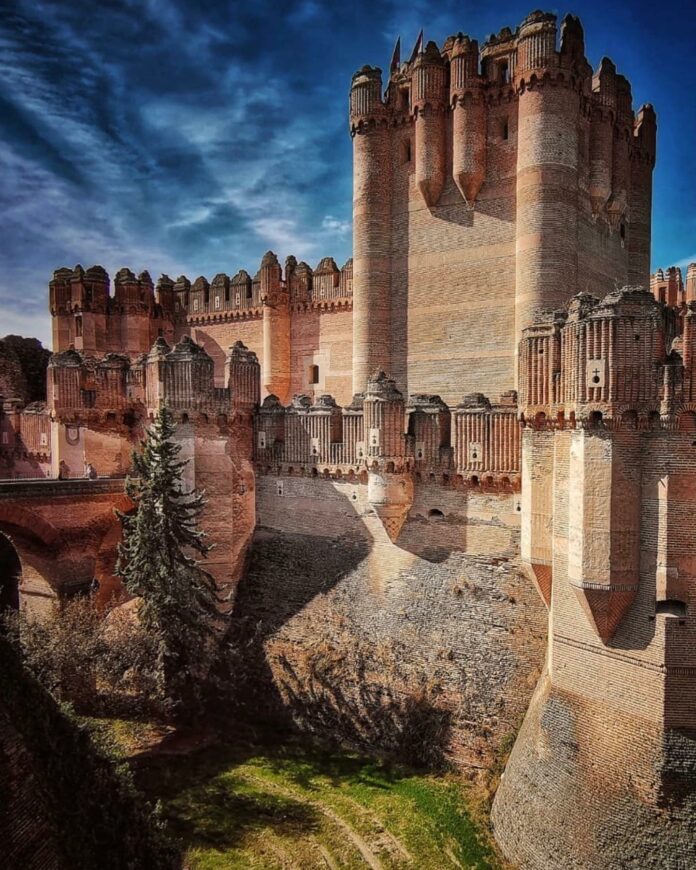Nestled in the heart of central Spain, the Castillo de Coca stands as a remarkable testament to the fusion of Moorish Muslim design with Gothic architecture. Constructed in the 15th century, this castle is widely regarded as one of the finest examples of Spanish Mudejar brickwork. Its grandeur and historical significance have led to its replication in several theme parks, further cementing its status as a cultural icon. This article delves into the rich history, intricate architecture, and enduring legacy of Castillo de Coca.
Ownership and Preservation
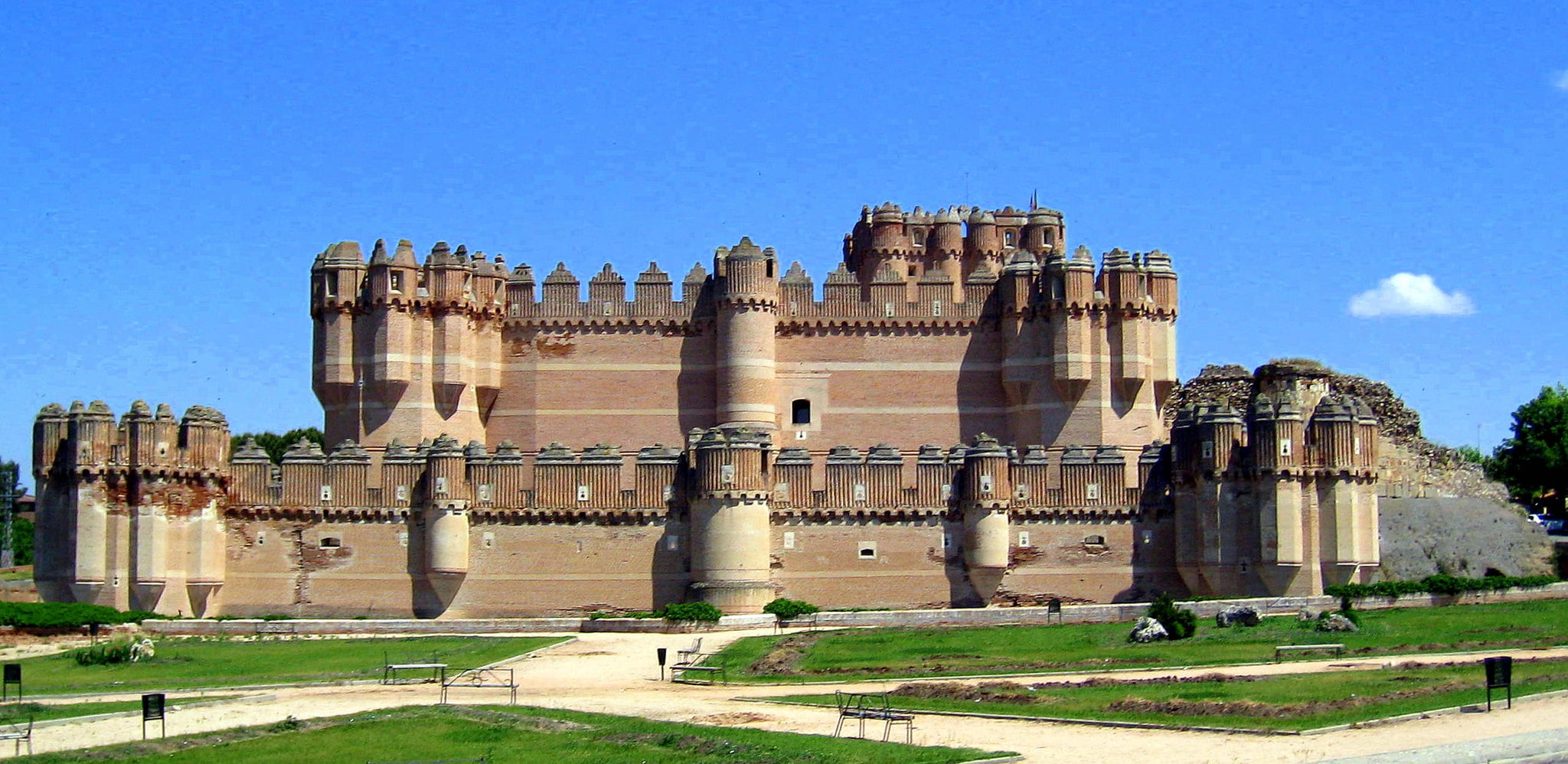
The ownership of Castillo de Coca has seen a fascinating evolution. Initially, it was held by the illustrious Spanish aristocratic family, the House of Alba de Tormes, until the mid-20th century. In 1954, the family transferred ownership of the castle to the Spanish Ministry of Agriculture. Recognizing its cultural and historical importance, the castle was declared a Spanish National Monument, ensuring its protection and preservation for future generations.
Construction and Architectural Brilliance
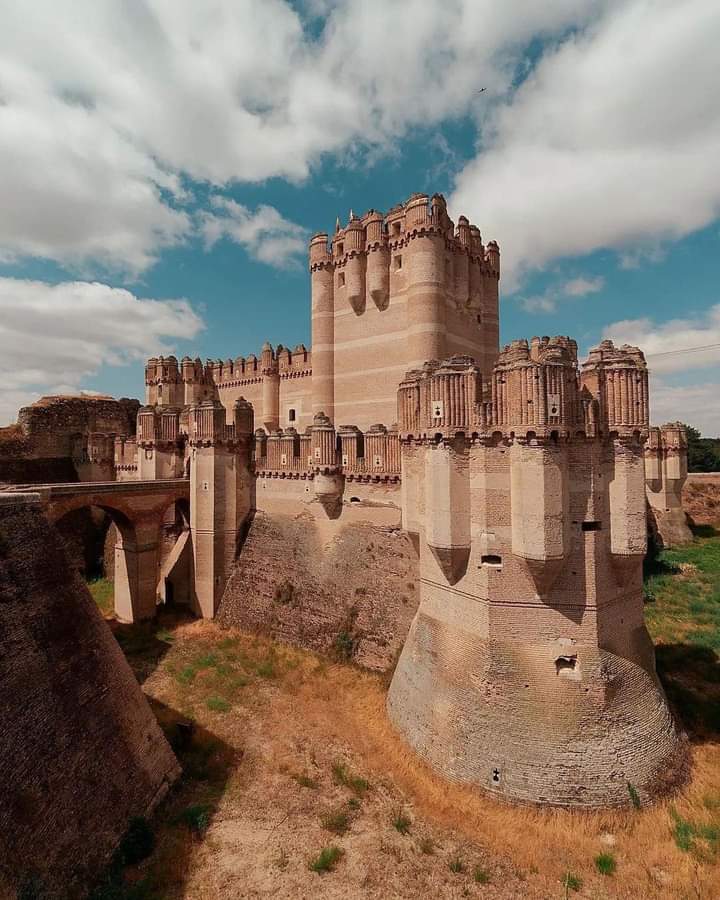
Castillo de Coca’s construction was overseen by a skilled Moorish architect, a common practice during medieval times when “Alarifes” (master builders) were frequently commissioned to design large edifices. The castle’s primary building material is brick, though not the ordinary type used for everyday houses. These are hardened bricks, crafted to withstand the relentless sieges of the era. The smooth application of mortar between these bricks resulted in a distinct pattern, making the castle’s brickwork an architectural marvel.
Built in classic Mudejar style, the castle incorporates both Moorish Muslim and Christian Gothic elements, creating a unique blend of geometrical patterns in its design. While brick is the dominant material, limestone and plaster were utilized for specific features, such as the balistraria and embrasures. The use of white limestone in the courtyard columns and the keep adds a touch of elegance to the fortress’s otherwise formidable appearance.
Design and Fortifications
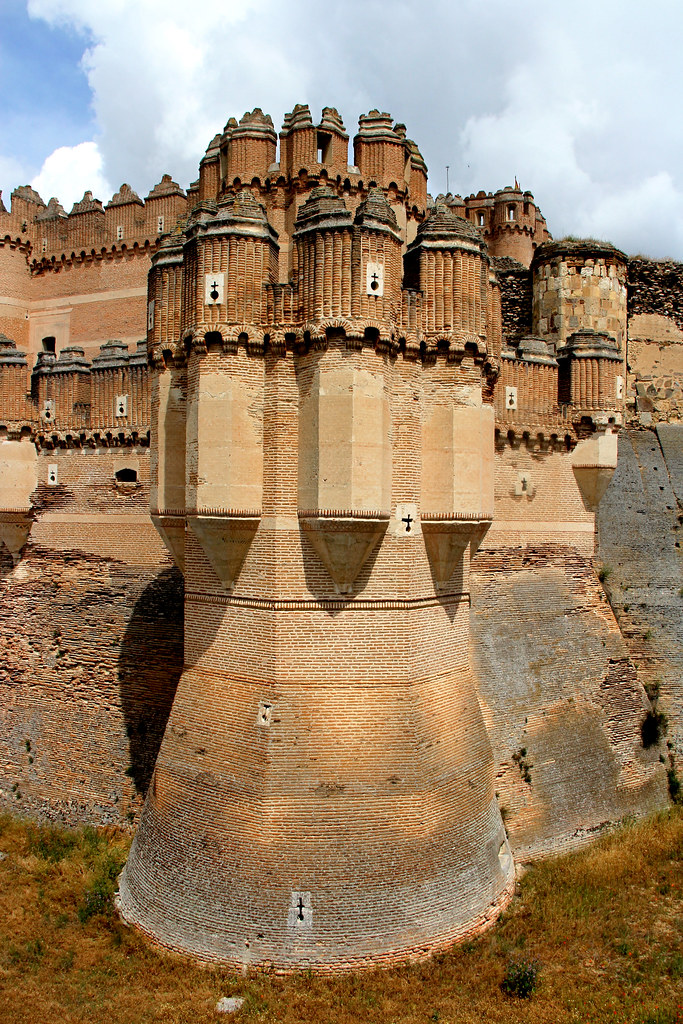
The design of Castillo de Coca is both strategic and aesthetically pleasing. The castle’s rectangular ground plan is fortified by a three-tiered defense system, consisting of wall circuits enclosed by a moat and a central keep, known as the Tower of Homage. The castle’s inner and outer curtain walls, although partially ruined, still bear the marks of a strong defensive structure. The surviving walls feature machicolations—overhanging parapets with openings used for dropping projectiles on attackers—further reinforcing the castle’s defensive capabilities.
The towers, predominantly rectangular, add to the castle’s imposing silhouette. The intricate brickwork, a hallmark of Mudejar architecture, is evident throughout the castle, particularly in the battlements, which serve both as fortifications and decorative elements.
Historical Significance
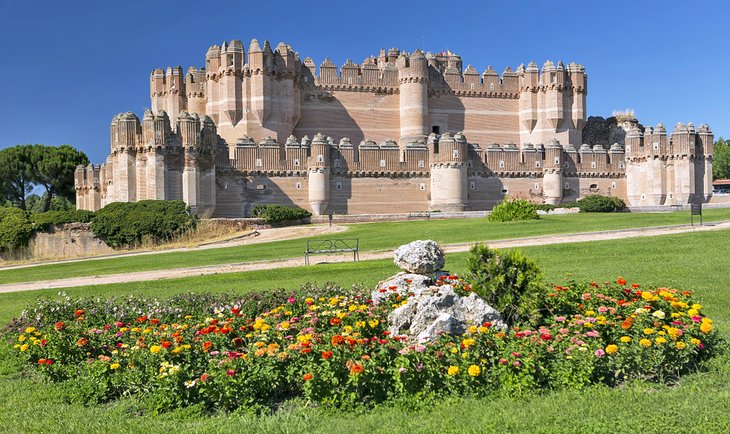
The history of Coca dates back to the Chalcolithic era, around 2,500–2,300 BC, making it one of Spain’s oldest settlements. By the 5th century AD, the village had grown into the historic city of Coca, known as Cauca during Roman rule. The construction of Castillo de Coca began in 1453, following a treaty ratified by King Juan II, and was largely completed by 1493 under the supervision of Alonso de Fonseca y Avellaneda.
Throughout its history, the castle played a significant role in several key events, including the Revolt of the Comuneros in 1521 and the Andalusian independence conspiracy of 1641. Over the centuries, the castle underwent various renovations, including the addition of the Patio de Armas in the 16th century and a gallery between the Keep and Pedro Mata Tower in the 17th century. However, a period of neglect in the 18th and 19th centuries led to the castle’s deterioration.
Modern Restoration and Legacy

In 1926, Castillo de Coca was declared a national monument of Spain, marking the beginning of its modern preservation efforts. However, significant restoration did not begin until 1954, when the Spanish government initiated repairs under the supervision of avant-garde architect Miguel de los Santos Nicolás. The restoration, completed in 1958, allowed the castle to be repurposed as a forestry training school, the “Escuela de Capacitación Forestal,” ensuring its continued use and maintenance.
Conclusion
The Castillo de Coca stands as a symbol of Spain’s rich architectural heritage and complex history. From its Mudejar design to its strategic fortifications, the castle embodies the ingenuity and craftsmanship of its creators. Today, it remains a treasured national monument, attracting visitors from around the world who come to marvel at its beauty and learn about its storied past. The ongoing preservation efforts ensure that Castillo de Coca will continue to inspire and educate future generations about the architectural and historical legacy of Spain.
